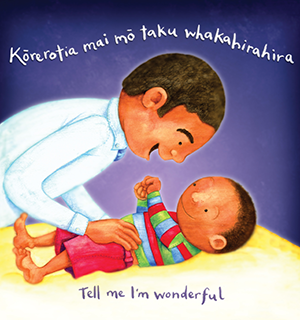
Baby is an individual
Babies each have their own temperament. Understanding their baby’s temperament helps parents to have realistic expectations of their routine and interactions.
Identifying temperament
Temperament describes differences between personality types that influence how people respond emotionally to experiences.
All babies (and children and adults too) have their own unique temperament. This is partly influenced by genes and partly by how parents and others interact with them.
A baby’s temperament can be seen by:
- how they respond to change and how quickly something or somewhere new can upset them
- the intensity of their upset and how long it takes them to recover
- their level of activity, for example, always on the go or more laid back
- their ability to pay attention
- their sensitivity to their environment, for example, noise, lights, smells and the number of people.
Ask whānau:
- What have you noticed about baby in relation to these traits?
- How do you think these differences might affect the way you care for baby?
Families with more than one child will notice temperament differences between siblings. Even with the same genes and raised in the same home, they’ll have their individual temperaments.
- Do you have brothers or sisters whose temperaments differ from yours or each other’s?
- What about your own parents – is your temperament similar to or different from either of theirs?
Temperamental fit
Temperament traits can see a baby labelled as easy going or challenging, with some parents finding it harder to fit in with their baby’s temperament than others.
For example, a parent who has very few routines and likes to be spontaneous may find it difficult parenting a baby who thrives on consistent routines and gets upset when these aren’t in place.
‘Temperamental fit’ describes how well parents and their baby’s temperaments align.
- What’s the temperamental fit between you and baby?
- What’s the temperamental fit between the parents?
Predictability
Babies with easy-going temperaments will have fairly predictable sleeping and feeding patterns, will adapt to new situations without too much trouble, and will generally have positive moods.
The opposite can be true for some babies. They may withdraw in new situations, have unpredictable routines, and be highly reactive and irritable.
These babies may also be the ones who laugh out loud or shriek with delight. And although they can be perceived as more difficult, they may cope better with changes in family routines – like travel or moving house – than easy-going babies.
It’s best not to label baby’s temperament as positive or negative. All children need parents who accept their unique way of being in the world and see the positive sides of their temperament.
A child can be helped so much when both their parents have realistic expectations of them, respond to their needs, and focus on the strengths of their temperament.
Ask whānau:
- In what ways might you support babies with differing temperaments?












